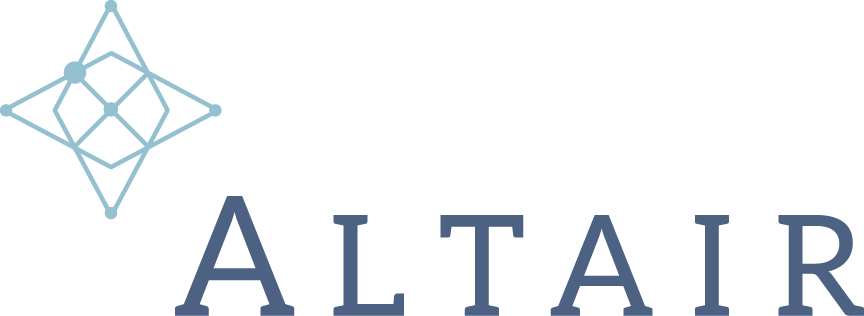What Trump’s ‘Big Beautiful Bill’ Means for You

The “One Big Beautiful Bill” turned out to be much more than “Just a Bill” (cue the famous Schoolhouse Rock cartoon). Once envisioned by the Republicans as primarily an extension of tax cuts, the new act (OBBBA) signed into law by President Trump on July 4th after its passage through Congress does indeed extend key tax provisions from the 2017 Tax Cuts and Jobs Act that were set to expire at year-end. But besides renewed certainty about taxes, it also offers fresh planning opportunities for individuals, business owners and charitable organizations. This article explores the act’s major provisions and the wealth strategies they unlock.
Estate & Gift Tax Exemptions
One of the most significant changes in estate planning is the permanent increase in the federal estate and gift tax exemption. Starting in 2026, the federal estate and gift exemptions will rise to $15 million for individuals and $30 million for married couples, up from the current $13.99 million and $27.98 million, respectively. Additionally, these exemptions will be indexed for inflation indefinitely, offering long-term predictability for high-net-worth individuals and families.
Planning Opportunities: With federal estate and gift tax exemptions set to rise in 2026, families should consider whether to make additional lifetime gifts or retain assets in the estate to benefit from a step-up in basis at death. Working with your Altair team, you can evaluate which strategy best aligns with your broader wealth transfer goals and existing estate plan, to help ensure you make the most of the expanded limits while staying responsive to legislative changes.
Income Tax Brackets
The Tax Cuts and Jobs Act (TCJA), enacted in 2018, established the seven federal income tax brackets currently in use, with a top marginal rate of 37%. These rates were originally set to expire, which would have resulted in the top bracket reverting to 39.6%. The OBBBA has made the TCJA provisions permanent, preserving the existing bracket structure and maintaining the top marginal rate at 37%. In addition, the bill introduces an increase to the standard deduction in 2025, raising it to $15,750 for individuals (up from $15,000) and $31,500 for married couples (up from $30,000), with both amounts indexed for inflation.
Planning Opportunities: With the OBBBA making the TCJA tax brackets permanent and increasing the standard deduction in 2025, taxpayers have a valuable opportunity to reassess their income and deduction timing, allowing high earners to maintain current tax efficiencies. Meanwhile, the higher standard deduction for individuals and married couples may reduce the need to itemize, prompting a shift in strategies such as bunching charitable gifts or prepaying deductible expenses to maximize tax benefits in select years.
Temporary Increase in State and Local Tax (SALT) Deduction
Starting in 2025, the state and local tax (SALT) deduction cap increases from $10,000 to $40,000 for taxpayers earning less than $500,000, with 1% annual inflation adjustments. However, this increase is temporary, as the cap is scheduled to revert back to $10,000 in 2030. For individuals and couples earning more than $500,000, the additional $30,000 deduction is phased out, limiting its benefit. Additionally, the OBBBA retains the $750,000 mortgage indebtedness limit from TCJA that was set to expire after 2025. It also restores the deductibility of mortgage insurance premiums permanently starting in 2026, providing further relief for homeowners who itemize deductions.
Planning Opportunities: High-income taxpayers may benefit from strategically timing income and deductions to remain below the $500,000 threshold, maximizing eligibility for the expanded SALT deduction. In addition, utilizing non grantor trusts can be an effective planning tool to shift income outside the donor’s personal return, offering a pathway to qualify for the enhanced deduction. These advanced strategies can help preserve valuable tax benefits and support long term wealth management goals.
Other Itemized Deductions and Tax Credits
From 2025 to 2028, OBBBA introduces temporary deductions including a $6,000 bonus for seniors filing singly and $12,000 for joint filers, plus up to $10,000 in interest on loans for U.S.-assembled vehicles. Meanwhile, the repeal of several clean energy tax credits marks a sharp policy shift, accelerating sunset dates originally set for 2032-2035. Credits ending soon include those for electric vehicles, home EV chargers, energy-efficient upgrades, and residential solar systems, with most expiring by the end of 2025. Taxpayers should act quickly to secure remaining benefits.
Planning Opportunities: These temporary deductions introduced under OBBBA present a range of valuable planning opportunities for taxpayers over the 2025- 2028 period. Individuals should consider how to strategically time income, deductions, and major purchases, such as U.S.-assembled vehicles, to fully leverage these benefits before they expire.
Changes to Charitable Deductions
Beginning in 2026, the OBBBA introduces a limited above-the-line charitable deduction for taxpayers who take the standard deduction up to $1,000 for single filers and $2,000 for married couples filing jointly. Individuals who itemize will be subject to a charitable deduction floor of 0.5% of adjusted gross income (AGI) and a limitation affecting taxpayers in the 37% bracket, capping the value of itemized deductions at 35%.
Planning Opportunities: Donors should revisit their giving strategies before 2026 to make the most of upcoming charitable deduction changes. Accelerating contributions into 2025, before the new 0.5% AGI floor and the cap on deduction value take effect, can yield greater deductions. Looking ahead, thoughtful timing and bundling of gifts can help preserve deductibility and enhance philanthropic impact under the revised rules.
Trump Accounts
A standout feature of the “Big Beautiful Bill” is the introduction of Trump Accounts – a universal savings vehicle aimed at building generational wealth. Starting this year, the government will contribute $1,000 for each child born between 2025 and 2028. Families can contribute up to $5,000 annually per child, counting toward the $19,000 gift exclusion. Children born earlier may still participate without the government match. Contributions can come from family, employers, nonprofits and government entities. Funds, invested in approved options, are generally inaccessible until age 18, except for education, disability, or first-time home purchases.
Planning Opportunities: Families should collaborate closely with their adviser to coordinate Trump Account contributions alongside existing wealth transfer and college savings strategies. While Trump Accounts offer a new tool for multigenerational wealth building, many questions remain about their nuances, including how best to integrate them with other vehicles already in place.
Business Incentives
The OBBBA offers significant tax planning opportunities for business owners through key provisions aimed at reducing taxable income and encouraging investment. One highlight is the extension of the Section 199A passthrough entity deduction, which allows owners of certain partnerships, LLCs, and S corporations to continue deducting up to 20% of qualified business income. The legislation permanently reinstates 100% bonus depreciation, reversing the scheduled phaseout under the TCJA that would have reduced the deduction to 40% by 2025 and eliminated it entirely by 2027. This change enables businesses to immediately expense the full cost of qualifying property, enhancing cash flow and incentivizing capital investment.
Planning Opportunities: Businesses should align major purchases and investments with projected revenue and the timing of enhanced provisions, while also reviewing post-2022 tax returns to leverage retroactive interest deduction changes. Employers should ensure eligibility for available tax credits to maximize incentives.
Beyond the headline-grabbing provisions of the “Big Beautiful Bill,” several under-the-radar updates carry meaningful implications for taxpayers, businesses, and institutions. These lesser-known changes, ranging from expanded 529 plan uses to new HSA eligibility rules, may not dominate the spotlight but they offer valuable planning opportunities. We encourage you to connect with your Altair team to evaluate cash flow strategies and ensure that your planning fully reflects the breadth of this landmark legislation.
_________________________________________________________________________
The material shown is for informational purposes only and should not be construed as accounting, legal, or tax advice. Although we made efforts to verify the accuracy of the information, Altair Advisers cannot guarantee its accuracy. Please see Altair Advisers’ Form ADV Part 2A and Form CRS at https://altairadvisers.com/disclosures/ for additional information about Altair Advisers’ business practices and conflicts identified.
